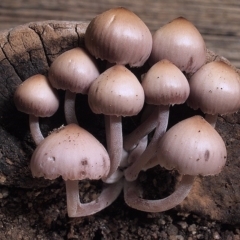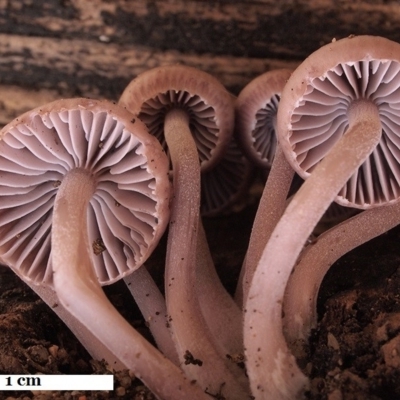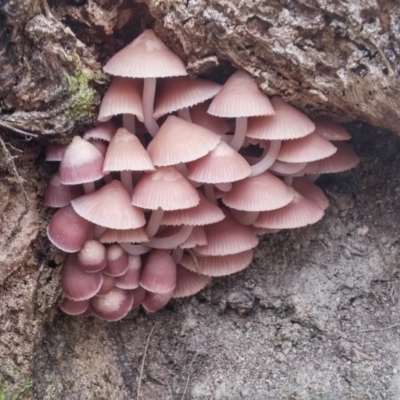Mycena 'clarkeana group'
The fruit body of Mycena clarkeana is a mushroom. The cap may be broadly conical, roughly hemispherical or bell-shaped and up to 4 centimetres in diameter. Often there is a slight bump at the centre. The cap has a striate margin and a smooth surface which may be moist unless conditions are dry. You will see it in pinkish shades, especially when fresh, or tinged with vinaceous or brownish hues. Sometimes the cap may become a little blotchy as uneven water loss in the cap causes a patchy colour variation. The gills are greyish pink. The greyish-brown stem may be up to 9 centimetres long and 5 millimetres wide.
Spore print: white.
There is neither a universal nor a partial veil.
The mushroom has a radish-like smell.
Mushrooms usually occur in clusters (the stems arising from a common point) on dead wood or at the bases of live eucalypts. Many Mycena species are decomposers of twig/leaf litter but this is one of the wood-inhabiting species of the genus.
The species was first described by Cheryl Grgurinovic in 1997, based on material collected at Cambewarra Mount, NSW in 1919.
Reference
Grgurinovic, C.A. (1997), Larger Fungi of South Australia. The Botanic Gardens of Adelaide and State Herbarium and The Flora and Fauna of South Australia Handbooks Committee, Adelaide.
Mycena 'clarkeana group' is listed in the following regions:
Canberra & Southern Tablelands
Species information
- Mycena 'clarkeana group' Scientific name
- Common name
- Not Sensitive
- Local native
- Non-invasive or negligible
- Up to 1030m Recorded at altitude
- Machine learning




































































